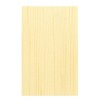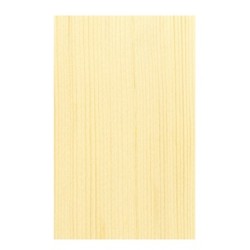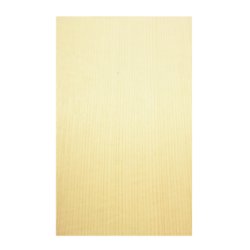European Spruce

Family: Pinaceae - Order: Pinales - Class: Pinopsida
Scientific
name: Picea abies
Trade name:
German Spruce
Also known as Norway Spruce,
European Spruce, German Spruce
Origin: Northern and Central
Europe
Instrumental uses:
Soundboards, sound bars,
bracing and
bindings.
Tonal properties:
Very rich
harmonic reproduction, great in tonal balance, reproduces all
frequencies but offers a very long bass extension range and on the overall
frequency range rings incredibly loud with very well defined highs, and great
note separation. Huge presence and extraordinary sound projection. If from a
master grade, very old, and naturally dried board, it can make a truly unique
instrument with a stunning sound. Is also extremely expensive.
Can and should be used for extraordinary sound
bars and bracing building. The wood’s strength means less wood used resulting
in very good sound optimization, as well as very straight and very consistent
grains. These grains being especially tight are always recommended.
So, it produces
incredible sounding tops on classical, acoustic guitars or other string
instruments as well. The older the wood the better the sound and stability.
When using centenary trees with regular, tight growth rings coupled with very
old seasoned woods, it can make for a perfect match to the most noble woods
used in back and sides.
Even though it is
a soft wood,
it is very stiff, very
consistent, with an average
dried weight of nearly of 25 lbs/ft3 or 405 kg/m3.
Picea
abies is a big and large three, fast-growing from 30 to 55m tall and with a trunk
diameter of 1 to 1.5 m. Can grow up 1m/year. After the 1st 25 years growth
starts to slow down around when they reach 20m tall.
It is a native of Northern and Central Europe but is also found on the High mountains of
Southern Europe introduced
from central Europe; often planted in the North and Central Sierras, in the
Serra de Estrela planted above 1500 m to avoid heat; planted as an ornamental
tree (and for the production of Christmas trees).
The
color of bark is reddish-brown
to grey. The
sapwood is darker than Picea engelmannii but
typically whitish cream sometimes with red and yellow stripes and the heartwood
is more darker and dense.
CITES status is unrestricted. Is reported on the IUCN Red List as least concern.
Gallery Photos




